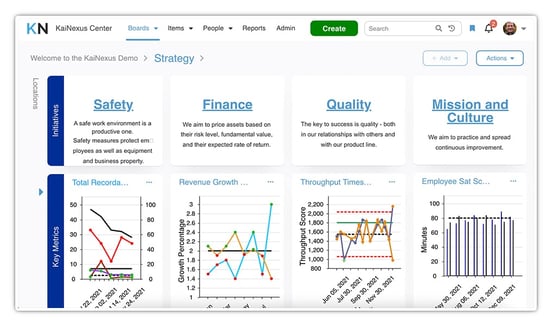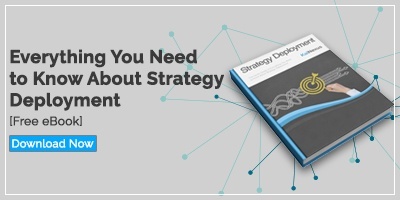 If you have implemented - or are planning to implement - strategy deployment software, let me take a minute to congratulate you. Too many organizations leave what is arguably the most important function of the organization without support. Pat yourself on the back for recognizing that if software helps you manage everything from your finances to your customer relationships, it can help manage the strategic direction of the company as well. That said, not all strategy deployment software implementations are equally effective. We’ve seen leaders with their hearts in the right place make tactical mistakes that diminish - or even eliminate - the value of strategy deployment software. Don’t let these missteps happen to you.
If you have implemented - or are planning to implement - strategy deployment software, let me take a minute to congratulate you. Too many organizations leave what is arguably the most important function of the organization without support. Pat yourself on the back for recognizing that if software helps you manage everything from your finances to your customer relationships, it can help manage the strategic direction of the company as well. That said, not all strategy deployment software implementations are equally effective. We’ve seen leaders with their hearts in the right place make tactical mistakes that diminish - or even eliminate - the value of strategy deployment software. Don’t let these missteps happen to you.
Limiting Use to Executives or Managers

Because strategy is thought to be something that is concocted and controlled in the boardroom, some people think that only executives and high-level managers need access to the technology that supports it. Robert Kaplan and David Norton of the Harvard Business Review Office of Strategy Management explained why this is not the case. “Our research reveals that, on average, 95% of a company’s employees are unaware of, or do not understand, its strategy. If the employees who are closest to customers and who operate processes that create value are unaware of the strategy, they surely cannot help the organization implement it effectively.”
Strategy deployment software should be used to create alignment up and down the organization. Every employee should understand how their role relates to the strategy and have performance metrics that matter in this context. Only when the software is used at every level do executives have an accurate window into progress toward goals and an early warning system when something goes off the rails.
Thinking that Strategic Planning is Ever Done
In many companies, the best place to hide a body is in the same drawer as the strategic plan. I suspect most of us have been in organizations where an annual ritual of strategic planning occurs. Executives gather in a room for a few days and send hundreds of emails back and forth to finally produce the annual plan - and no one ever hears of it again. Strategy deployment (also known as Hoshin Kanri) is not an event. It is something that requires daily management and needs to be kept top of mind for every single employee. That’s why the software you select should have the ability to manage long-term projects as well as daily incremental improvements that foster momentum toward the breakthrough objectives.
Creating Unnecessary Barriers to Adoption
If you want people to use a software solution, you need to think about it in the context of how they work. These days, people expect to be able to access important business applications and data from anywhere, at any time. That’s why it is important to choose a cloud-based solution that works well on the mobile devices that employees love. It should also be easy to use and configured in a way that is meaningful to each person and role. Managers and leaders need access to different information than front-line employees, so the solution needs to be flexible enough to address a variety of uses and needs. People will use software if it is useful to them.
Skimping on Training
Training on strategy deployment software shouldn’t start with where to click. It should start with a meaningful discussion of the purpose of the strategic planning approach. People need to know how strategy deployment will be managed and what metrics will be used to determine success. Individuals should understand how their performance will be evaluated and what is expected of them in terms of long and short-term projects. (And yes, they need to know where to click.) Be sure that this training is part of the on-boarding of every new employee so they can get up to speed and start contributing to your goals quickly.
Neglecting Regular Measurement
The best strategy deployment software solutions allow leaders to gauge the organizations progress toward goals anytime and in real-time so there is no reason to be surprised if something goes wrong. It is smart to make discussing the path to key objectives part of everyday conversation and to have regular and frequent checkpoints.
Like all technology, strategy deployment software needs to be implemented thoughtfully in order to be effective. When done well, it has the power to bring teams together and get the results you want faster and with less friction. Steer clear of these pitfalls and you’ll be in good shape.




Add a Comment